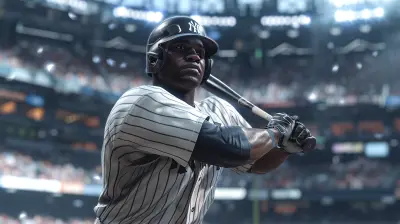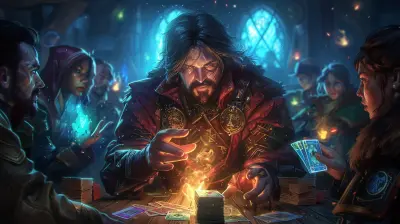Retro Racing Games: From Pole Position to Mario Kart
16 August 2025
Let’s rewind the clock. You’re seated cross-legged on the floor, a clunky controller in hand, the glow of a grainy CRT TV illuminating your snack-covered carpet. Your thumbs are sore, your eyes are bloodshot, and your spirits? Higher than your in-game top speed. Welcome back to the glorious world of retro racing games—where pixels roamed free and realism was just a rumor.
In this lovingly sarcastic joyride, we’re diving headfirst into the vintage RPMs of racing greatness. From the jittery squeals of tires in Pole Position to banana-induced chaos in Mario Kart, buckle up—we’re taking a trip down memory lane at full throttle.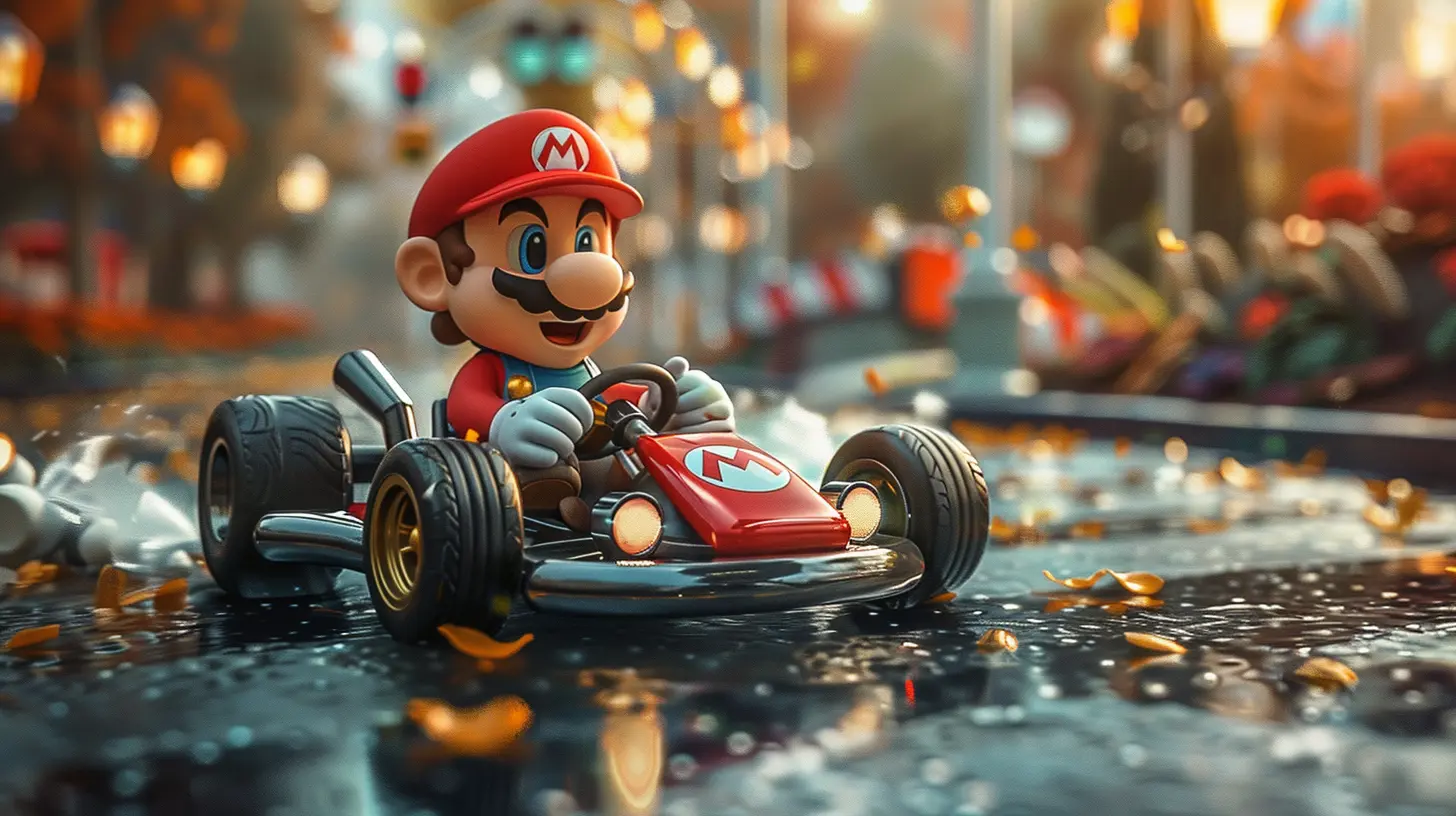
The Arcade Era: Where Quarter-Mile Meant a Quarter Per Game
Ah yes, the arcade—where dreams were born, allowances died, and greasy joysticks reigned supreme. Racing games were a staple in these neon-filled paradises. Who needed realism when you had adrenaline, right?Pole Position (1982): The Godfather of Racing Games
If racing games had a Mount Rushmore, Pole Position would be Lincoln’s smug little pixelated face. Developed by Namco, this arcade legend let you race in a “lifelike” recreation of the Fuji Speedway. And by lifelike, we mean it looked like someone attempted a Picasso interpretation of a racetrack using Lego bricks.But let’s not kid ourselves—this game was revolutionary. Real racetracks?! Qualifying laps?! Explosions when you hit a signpost?! This was the Fast & Furious of its day—minus the family speeches and budget.
Controls were simple. Steer, accelerate, brake—repeat until your thumbs gave out or your mom dragged you out of the arcade by the ear. And let’s not forget the glorious force-feedback steering wheel that could double as a medieval torture device.
Out Run (1986): The Ferrari-Fueled Daydream
Out Run showed up in the mid-80s like that cousin who shows up at Thanksgiving with a better job, better car, and better hair. It was less of a racing game and more of a weirdly romantic road trip simulator. You drove a red Ferrari Testarossa with your blonde girlfriend chilling in the passenger seat, cruising through sun-drenched landscapes and making clumsy turns while jamming out to some synthesized beach tunes.It screamed 80s excess, and we were here for it.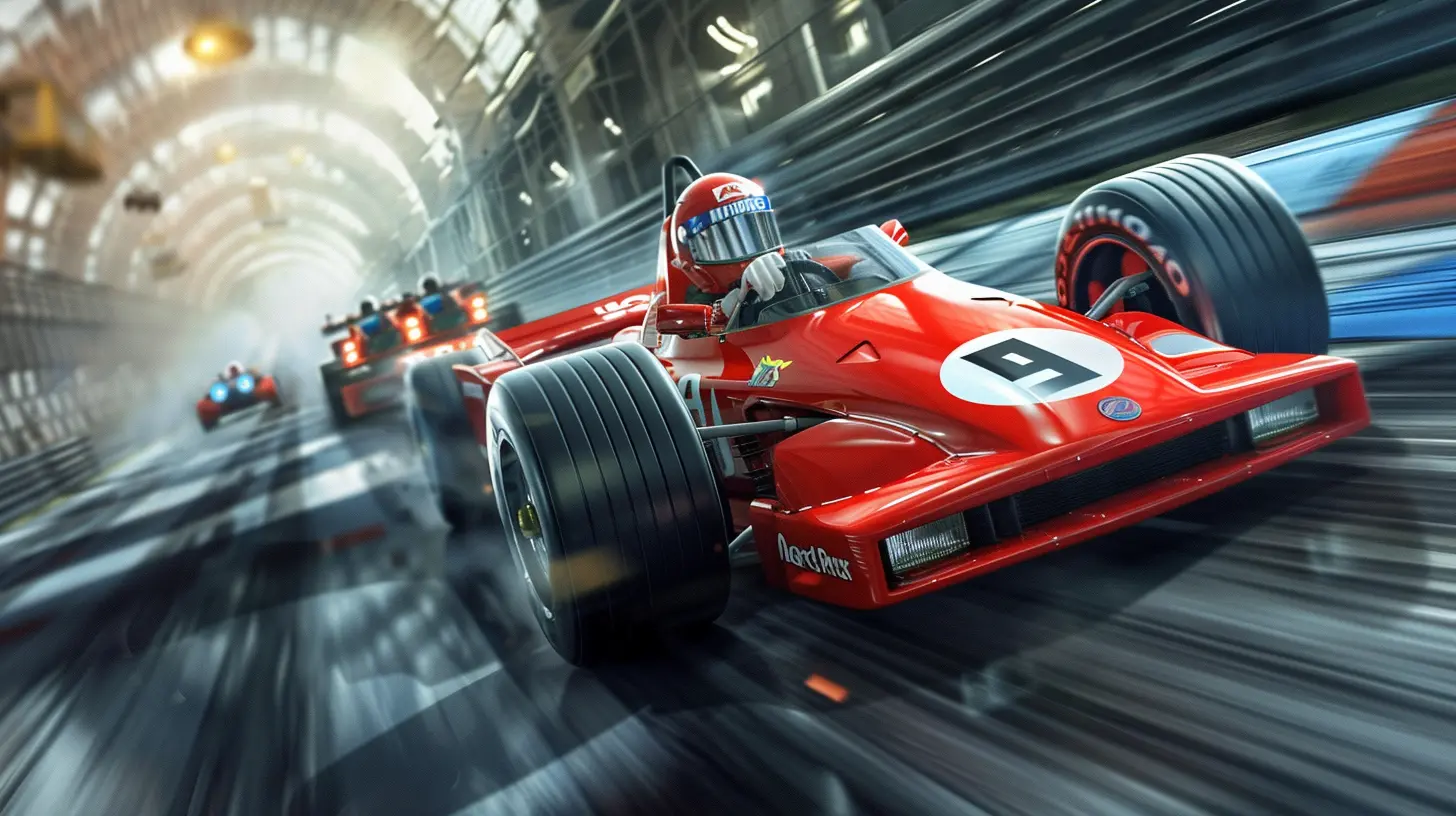
16-Bit Dreams: Console Racing Gets Serious
When home consoles started flexing their horsepower, racing games went from arcade novelties to couch-bound staples. And no, you weren’t “too close to the screen,” Mom.F-Zero (1990): Welcome to the Futuristic Speed Cult
Enter F-Zero—a mind-bending, turbo-charged slap in the face to everything you thought racing games could be. Set in the magical year 2560 (because why not?), it threw out cars in favor of hovercrafts that looked like rejected Transformers.This SNES gem ran at a blazing 60 FPS, which, back then, was like discovering fire. Captain Falcon made his first appearance here, and even though he barely said a word, he punched his way into gamer hearts everywhere.
F-Zero wasn’t just about racing—it was about surviving each track as though it were a booby-trapped, magnetized death strip. Spoiler alert: it usually was.
Super Off Road (1989): Tiny Trucks, Big Mayhem
Super Off Road was the game that said, “What if we threw respect for gravity out the window and made trucks bounce like bunnies on moon boots?” Played from a top-down perspective, it was chaotic, fast, and absolutely impossible to master unless you were a caffeinated wizard.You could upgrade your nitros and suspension between races, which introduced us to the dangerous high of customizing your vehicle—a habit many of us still haven’t kicked.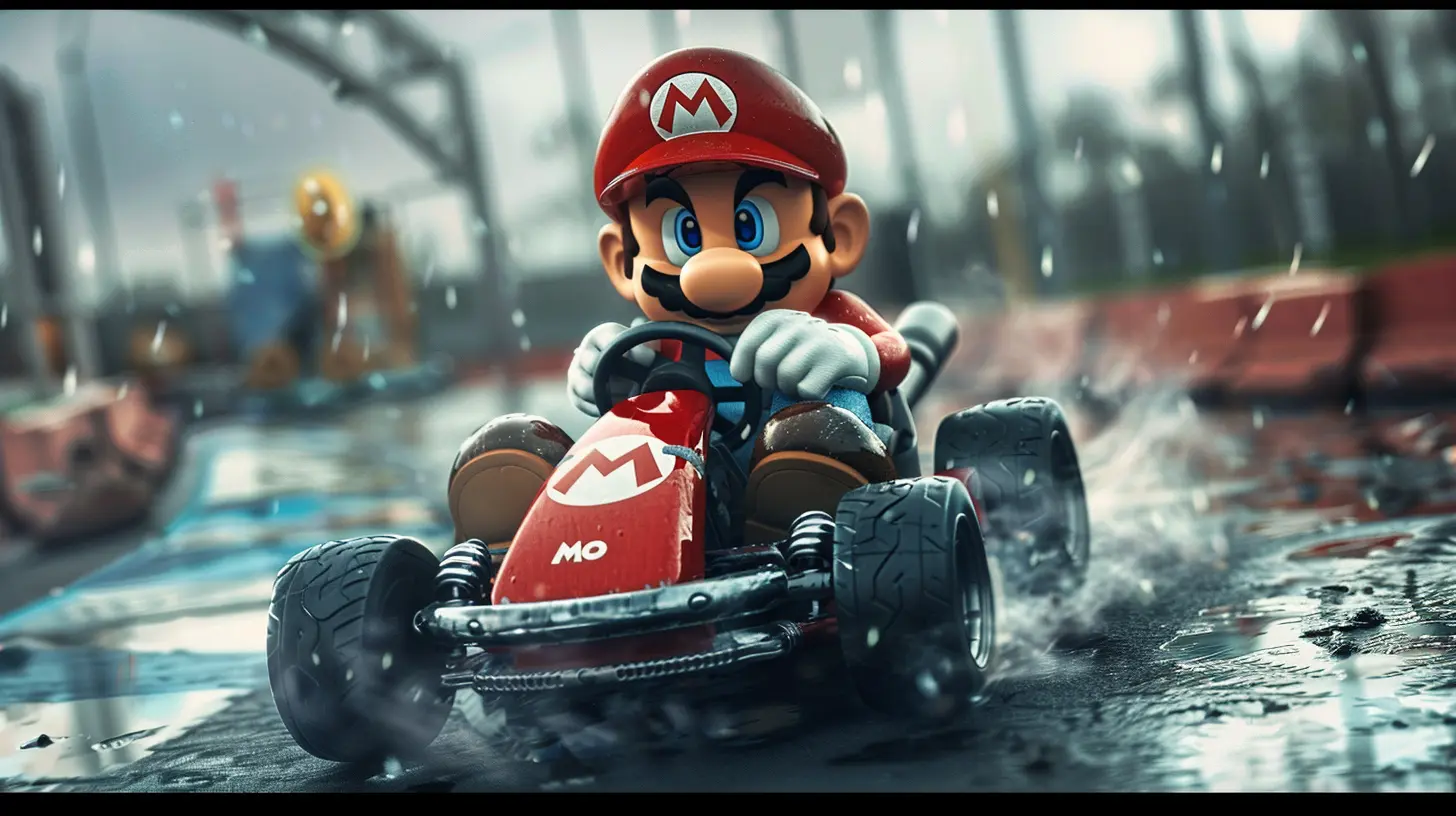
3D Revolution: Polygons, Please!
By the mid-90s, things got... blocky. Developers discovered 3D graphics, and suddenly every racing game looked like a pile of cardboard boxes trying to drive each other off cliffs. But hey, progress is progress.Virtua Racing (1992): The First 3D Dive Bomb
Virtua Racing rolled out with Sega’s signature pizzazz and said, “Screw pixels, we got triangles now!” It barely resembled any real car, but we didn’t care. We were too busy being dazzled by smooth curves (the track ones, not the cars), and the revolutionary dynamic camera angles that made us feel like we were directing a Spielberg film.It was like racing in a digital shoebox—but a glorious one.
Ridge Racer (1993): Sideways is the Right Way
Ridge Racer wasn’t just a racing game—it was an attitude wrapped in a techno mixtape. Released on PlayStation, it revolutionized console gaming with its sleek graphics and heavy emphasis on drifting. And by drifting, we mean holding a turn button and praying to the gods of traction.It proved that racing didn’t have to be serious. You could go sideways into every turn, scream at the screen, and still have a blast doing it.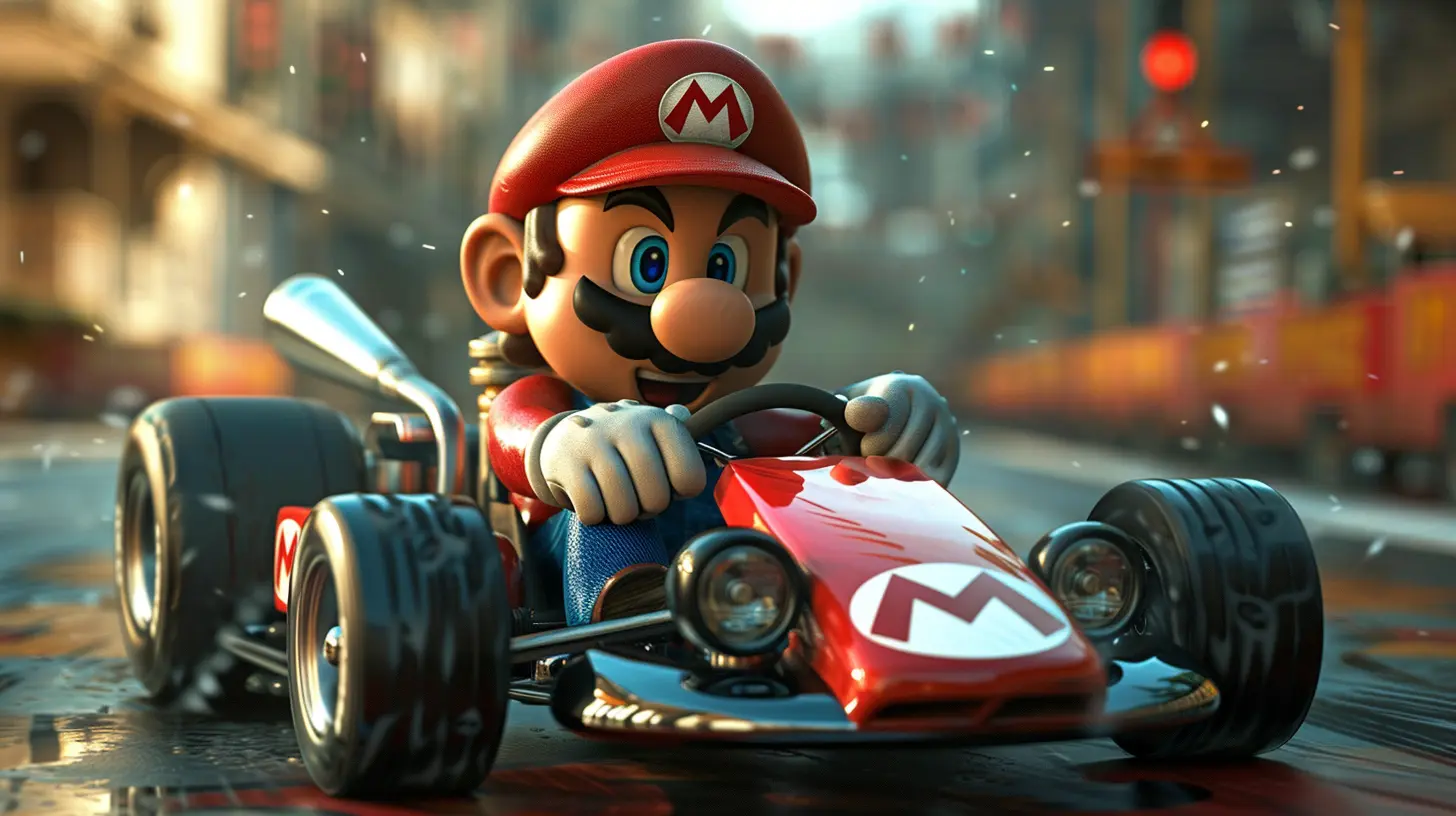
Mario Kart (1992–Forever): Mayhem in Mushroom Kingdom
Now let’s talk about the crown jewel—the high-octane, friendship-wrecking chaos that is Mario Kart. What started in 1992 on the SNES became a multigenerational war.Super Mario Kart: Cute but Deadly
The original game looked innocent enough. Eight lovable Nintendo characters driving tiny go-karts around tracks made of doughnuts, pipes, and lava. What could possibly go wrong?Everything. Everything could go wrong.
This was the game that introduced us to the very concept of rage quitting. Red shells? Unfair. Blue shells? War crimes. Banana peels? Tiny, yellow legacies of pure hatred.
But man, it was fun. It balanced skill with sheer dumb luck—which meant even your non-gamer cousin could beat you, and you’d be forced to accept it.
Honorable Mentions: The Glorious Glitches and Gimmicks
Let’s give a nod to the oddballs and underdogs of retro racing. Because not every classic wore a crown—some rode into legend on busted pixels and janky mechanics.Micro Machines (1991): Honey, I Shrunk the Race Cars
Remember racing on a kitchen table dodging cereal boxes and spilled milk? Micro Machines brought literal tabletop racing to life. It was absurd. It was unfair. It was awesome.What made it legendary? The couch co-op chaos. Up to 4 players on one screen meant the game often turned into a shouting match, which is exactly how gaming is meant to be.
RC Pro-Am (1988): RC Never Stood for “Realistic Controls”
RC Pro-Am was the kind of game that taught you precision, patience, and that oil slicks are the worst gift a game can offer. It looked simple but had layers of strategy, and let’s be honest—it beat doing your homework.What Made Retro Racing So… Retro?
Look, racing games today are high-def, hyper-realistic simulations of actual motorsports, where tire degradation and fuel consumption matter more than having fun.But back then? It was all about the vibe.
Retro racing games weren’t just about winning. They were about:
- Laughing at absurd physics
- Cursing at rubber band AI
- Enjoying couch co-op with actual humans
- Flying off the track and still somehow finishing first
They didn’t need 4K textures or ray tracing. All they needed was imagination, heart, and a little bit of pure, unfiltered chaos.
Why Retro Racing Games Still Matter
Let’s get real—retro racing games still hold up. Why? Because they’re fun, fast, and don’t take themselves too seriously. They remind us that gaming doesn’t have to be photorealistic to be fantastic.Retro titles paved the way for today’s racing juggernauts. Without their pixelated glory, we wouldn’t have the visual masterpieces we see now. Titles like Gran Turismo or Forza owe their very existence to the clunky, glorious chaos of their ancestors.
So the next time someone scoffs at an 8-bit racing game, just ask them this: “Can your precious sim racer beat a plumber driving a go-kart who just got hit by a blue shell mid-jump over lava?” I didn’t think so.
Final Lap Thoughts
Retro racing games aren’t just old—they’re timeless. They’re the pixelated grandparents of modern speed demons, still packed with charm, challenge, and cheeky joy. Whether you’re drifting through Rainbow Road or dodging oil spills in RC Pro-Am, one thing’s for sure: these games were, and always will be, full-throttle fun.So dust off your SNES, plug in that Sega, or just fire up an emulator (we won’t tell), and dive back into the past at breakneck speed. Just don’t forget to bring a snack. Retro racing is a marathon, not a sprint.
all images in this post were generated using AI tools
Category:
Retro GamesAuthor:

Madeleine McCaffrey
Discussion
rate this article
2 comments
Brianna McAdoo
This article brilliantly captures the evolution of racing games, highlighting nostalgic classics while celebrating the fun and creativity of modern titles like Mario Kart. A must-read!
November 27, 2025 at 5:45 AM

Madeleine McCaffrey
Thank you for your kind words! I’m glad you enjoyed the article and appreciate the blend of nostalgia and modern racing fun.
Ariana McElhinney
Great insight! Nostalgia for these classics always brings back fond memories. Thanks!
August 17, 2025 at 2:50 PM

Madeleine McCaffrey
Thank you! I'm glad the article brought back those memories for you!
